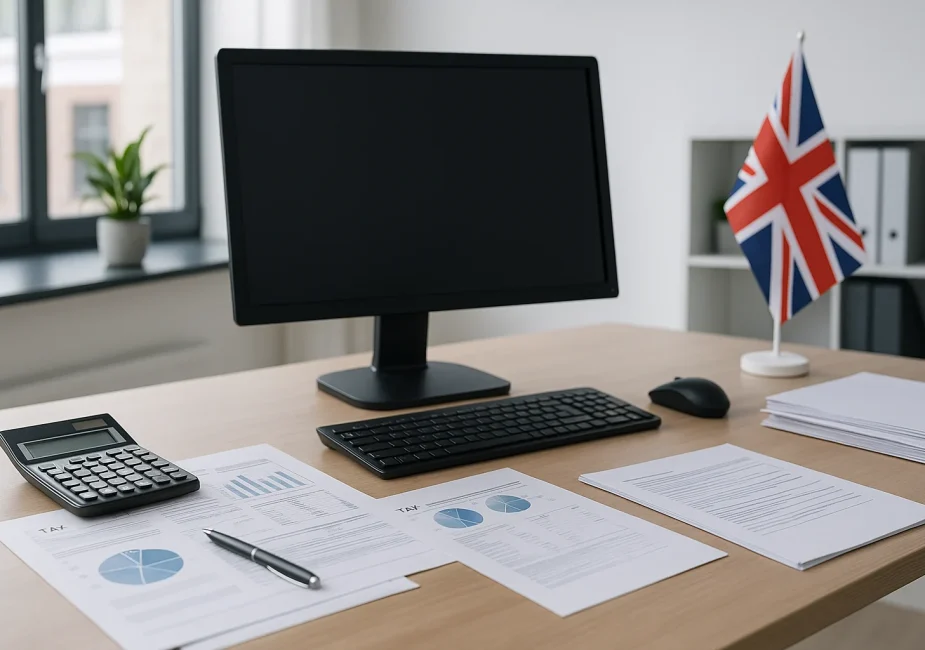Will Tax Brackets Change in 2026?

Is the UK government planning to alter tax brackets in 2026? Will personal allowances increase, or will they remain frozen as part of a longer-term fiscal strategy? These are questions currently on the minds of taxpayers, financial planners, and business owners across the United Kingdom.
According to government announcements made in the Autumn Statement 2022, the Personal Allowance and basic rate tax thresholds will remain fixed until the end of the 2027–2028 tax year. While this may appear to suggest stability, the reality is that such a freeze, especially in the context of rising wages and inflation, can have a significant financial impact on individuals and households.
This article examines the current position on income tax brackets in the UK, how the freeze affects taxpayers, and the broader implications of this measure heading into 2026 and beyond.
What Are the Current Income Tax Thresholds and Will They Stay the Same in 2026?

The UK’s Personal Allowance, which is the amount of income a person can earn before paying income tax, is currently set at £12,570. The basic rate limit representing the portion of income taxed at 20%, is £37,700. These combine to establish a higher rate threshold of £50,270, above which income is taxed at 40%.
These thresholds were initially frozen in the Finance Act 2021 and were meant to remain unchanged until the 2025–2026 tax year. However, in the Autumn Statement 2022, the government extended the freeze for an additional two years, keeping these figures fixed through to the end of the 2027–2028 tax year.
This decision applies to savings and dividend income across the UK, and to non-savings, non-dividend income in England, Wales and Northern Ireland. In Scotland, devolved income tax rules may apply, particularly for earned income.
The table below outlines the confirmed thresholds:
| Tax Year | Personal Allowance | Basic Rate Limit | Higher Rate Threshold |
|---|---|---|---|
| 2026–2027 | £12,570 | £37,700 | £50,270 |
| 2027–2028 | £12,570 | £37,700 | £50,270 |
These figures will remain unchanged unless revised by future legislation.
How Will the 2026 Tax Freeze Affect Different Income Groups?
Although the tax rates themselves are not increasing, the prolonged freeze on thresholds effectively increases the tax burden for many individuals. This phenomenon, commonly referred to as “fiscal drag”, means that as wages rise with inflation, more of an individual’s income moves into higher tax brackets even if their real purchasing power remains the same.
For example, a worker earning £48,000 in the 2025–2026 tax year would remain under the higher rate threshold. However, if that same individual receives an inflation-linked pay rise to £52,000 in 2026–2027, £1,730 of their income would now fall under the 40% higher rate tax band. This results in a higher tax bill despite only a modest increase in earnings.
Similarly, someone earning £12,500, just under the Personal Allowance, may find themselves paying income tax if their income rises to £13,200 in the following tax year. This introduces new taxpayers into the system and reduces net income for many low to middle-income earners.
The Office for Budget Responsibility (OBR) estimates that by the 2027–2028 tax year, an additional 92,000 individuals will be drawn into income tax and 55,000 more will be paying National Insurance contributions.
What Changes Are Happening with National Insurance in 2026?

National Insurance thresholds are also impacted by the government’s freeze. The following NIC thresholds will remain aligned with the Personal Allowance of £12,570 until 2028:
- Primary Threshold (PT) for Class 1 NICs (employees)
- Lower Profits Threshold (LPT) for Class 2 NICs (self-employed)
- Lower Profits Limit (LPL) for Class 4 NICs (self-employed)
In addition, the Upper Earnings Limit (UEL) and Upper Profits Limit (UPL) are aligned with the higher rate tax threshold and will stay fixed at £50,270 through to 2027–2028.
This means that, as with income tax, any increase in earnings beyond these static thresholds will result in higher NIC payments. Employers and employees alike will be affected, particularly where salary growth pushes individuals into NIC brackets with higher contribution rates.
Why Is the UK Government Freezing Tax Thresholds Until 2028?
The decision to extend the freeze is part of the government’s stated objective to restore and maintain sustainable public finances. Following a period of economic strain brought on by the COVID-19 pandemic, energy crisis, and inflationary pressures, there has been an increased emphasis on fiscal responsibility.
By freezing tax thresholds rather than increasing tax rates, the government aims to collect more revenue in a less visible way. It argues that this approach is fairer, as those with rising incomes will contribute more, while the basic structure of the tax system remains unchanged.
Government forecasts project that this measure will raise an additional £1.26 billion in revenue by 2027–2028.
How Does This Policy Affect Employers and Pension Providers?
For employers and pension administrators, the freeze introduces few administrative burdens. Income tax thresholds are integrated into the PAYE system, and annual tax code adjustments are already standard procedure managed by HMRC.
As no new thresholds or complex legislative changes are being introduced during this period, implementation is expected to be straightforward and cost-effective. Minor IT updates may be required, but these are expected to be manageable within routine systems maintenance.
Will Scotland Follow the Same Tax Thresholds in 2026?

While the Personal Allowance remains consistent across the United Kingdom, Scotland has legislative powers over income tax on non-savings and non-dividend income. As such, Scottish taxpayers may face different tax bands and rates compared to those in England, Wales and Northern Ireland.
For example, the Scottish Government may choose to adjust income tax thresholds annually in response to inflation or public funding needs, even if the UK-wide thresholds remain unchanged. However, for savings and dividend income, the UK rules still apply.
What Will Be the Economic and Social Effects of the Tax Freeze?
Economically, the measure is not expected to have a significant macroeconomic impact. However, it will influence individual financial behaviour, particularly among those with flexible earnings. Some may reduce their taxable income by increasing pension contributions or making charitable donations.
On a societal level, the freeze is expected to shift more people into tax and NIC-paying brackets. The OBR anticipates a rise in the number of individuals paying income tax, with the cumulative effect of reducing disposable incomes for many.
Despite these outcomes, the measure is not expected to affect family formation, equality, or protected characteristics. It is considered a broadly neutral policy in terms of gender, ethnicity and disability.
Could the Tax Brackets Change Again Before 2028?
Although the thresholds are legislated to remain unchanged until 2028, a future government could amend them through a Finance Bill or other legislative mechanism. Changes could also be introduced if there are substantial shifts in economic conditions or public pressure increases.
After April 2028, the default legislative position is for the Personal Allowance and basic rate limit to increase in line with the Consumer Price Index (CPI). Whether this happens will depend on the government’s fiscal priorities at that time.
What Are the Official Tax Threshold Figures for 2026–2028?
The following table outlines the expected figures:
| Tax Year | Personal Allowance | Basic Rate Limit | Higher Rate Threshold | NICs UEL/UPL |
|---|---|---|---|---|
| 2026–2027 | £12,570 | £37,700 | £50,270 | £50,270 |
| 2027–2028 | £12,570 | £37,700 | £50,270 | £50,270 |
These fixed figures will continue to affect tax liabilities as inflation-adjusted earnings grow.
Is the UK Using Stealth Taxation Strategies?

Yes, the tax threshold freeze is often cited as a form of stealth taxation. Rather than visibly increasing tax rates, the government is allowing inflation and wage growth to naturally increase the number of taxpayers and the amount of tax paid.
This approach is less politically contentious but has similar effects to raising tax rates in real terms. More people pay more tax without any overt legislative change, which can reduce transparency in public finance policy.
What Should Taxpayers Do to Prepare for 2026?
Given the freeze on thresholds, taxpayers are encouraged to review their financial plans proactively. Understanding how rising earnings could push income into higher tax brackets will help in avoiding unexpected tax bills.
Individuals should assess whether increasing pension contributions or using tax-efficient savings vehicles like ISAs could mitigate the effects of fiscal drag. Employers and pensioners should also be aware of how these changes may influence take-home pay.
Financial advisers can provide tailored guidance, especially for those approaching higher rate thresholds.
Conclusion
Will tax brackets change in 2026? Officially, they will not. However, the decision to freeze income tax and National Insurance thresholds through to 2028 will have a tangible impact on millions of UK taxpayers. As wages rise and thresholds remain static, more individuals will face higher tax bills.
While the measure is designed to support public finances, it is essential for individuals and businesses to understand its implications. Proactive planning can help mitigate the effects of this extended freeze and ensure financial resilience in the years ahead.
FAQs About UK Tax Changes in 2026
Will my tax bill increase even though the rates are the same?
Yes. As your income grows due to inflation or promotion, more of it may fall into a higher tax band because the thresholds are frozen.
How many more people will be paying income tax by 2028?
The Office for Budget Responsibility estimates that an additional 92,000 individuals will pay income tax by 2028 as a result of the freeze.
Are National Insurance thresholds also frozen?
Yes. NIC thresholds such as the Primary Threshold and Upper Earnings Limit will remain fixed until April 2028.
Does this affect self-employed workers?
Yes. Self-employed individuals paying Class 2 and Class 4 NICs will also see thresholds frozen, impacting their contributions.
Is this measure applicable across the UK?
The Personal Allowance applies UK-wide, but basic and higher rate income thresholds differ in Scotland due to devolved powers.
Can the government change its mind before 2028?
Yes. The freeze is subject to legislation and could be reversed or revised in future Budgets or Finance Acts.
How should people plan ahead?
Taxpayers should evaluate their income growth, review pension strategies, and consult with financial advisers for tax-efficient planning.



